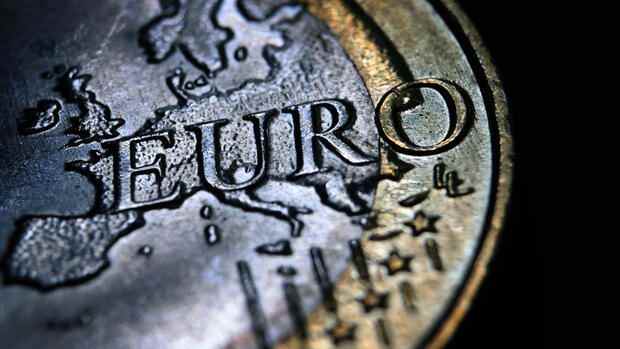Inflation has also risen significantly recently in the euro area.
(Photo: dpa)
Frankfurt Prices in Germany continue to rise. In December, the inflation rate in this country was 5.3 percent, as the Federal Statistical Office announced on Thursday based on a preliminary estimate. Economists had expected a decline to 5.1 percent. In November prices had risen by 5.2 percent – more strongly than since 1992, when the boom after reunification resulted in high inflation rates.
According to the results available so far, the annual average inflation rate is expected to be 3.1 percent in 2021. In the pandemic year 2020, prices rose by only 0.5 percent compared to the previous year, in 2019 the annual rate was 1.4 percent.
Inflation has also risen significantly recently in the euro area. The European statistics agency Eurostat will publish the rate for December tomorrow, Friday morning.
Inflation is causing controversial debates among economists and in the financial markets. In December, the Bundesbank raised its forecast for Germany significantly. According to the European method of calculating the harmonized index of consumer prices (HICP), it expects an inflation rate of 3.6 percent for this year, after having previously assumed 1.8 percent.
Top jobs of the day
Find the best jobs now and
be notified by email.
The European Central Bank (ECB) also increased its forecast significantly. However, she continues to attribute the increase mainly to special effects from the pandemic, especially to delivery bottlenecks, catch-up effects in consumption and the reversal of the VAT reduction from last year in Germany.
Furthermore, it assumes that the price pressure in the euro area will ease in the course of the year. Some economists, however, expect higher price increases in the long term. Within the Governing Council, too, individual members are issuing stronger warnings about the dangers of inflation.
“The underlying price pressure remained surprisingly high in December,” commented Commerzbank chief economist Jörg Krämer on the current figures for Germany. He assumes that the inflation rate should fall after the turn of the year due to the elimination of special factors. “But the inflation risks are clearly pointing upwards. It is time for the ECB to take its foot off the accelerator. “
The chief economist of KfW, Fritzi Köhler-Geib, also considers it “crucial that the ECB keeps an eye on the interest rate turnaround, communicates it reliably and follows it consistently, taking into account the further development of inflation”.
More on inflation and the interest rate turnaround:
Most recently, in December, the ECB decided to phase out its PEPP pandemic purchase program in March. After that, however, she wants to top up her older purchasing program with the abbreviation APP. The purchases processed through this are expected to rise to 40 billion euros per month from April. The volume is expected to drop to 20 billion euros per month by October.
Since an end to bond purchases is a prerequisite for an interest rate hike, an early turnaround in interest rates in the euro area is very unlikely. That had sparked debate at the December Council meeting. Individual council members, including the then Bundesbank President Jens Weidmann, had campaigned for the ECB to emphasize the dangers of inflation more strongly.
Inflation forecasts are fraught with uncertainties
The inflation warnings referred to various risks. For example, the ECB takes into account the oil prices on the futures market in its inflation forecasts for the coming years. These indicate a decline in prices.
However, it is uncertain whether the oil price will really fall. On Tuesday the OPEC oil exporting states decided to stick to their previous plans for expanding oil production. Nevertheless, the oil price rose again. In addition, wage increases could also be higher than initially expected.
The main price driver in Germany in December was again energy prices, which rose by 18.3 percent compared to the previous year. However, the decline in oil and gas prices had a somewhat dampening effect in December. In November the increase there was still 22.1 percent. The main price driver in December was energy prices, which rose by 18.3 percent compared to the previous year. However, due to the fall in oil prices, the increase there was somewhat lower in December than in November, when it was 22.1 percent.
By contrast, food prices rose more than in the previous month by 6.0 percent. In November they had increased by 4.5 percent. “Vegetables in particular, but also dairy and baked goods have become noticeably more expensive,” said DZ Bank’s chief economist, Michael Holstein. The prices for gas and package tours have also risen more sharply. Services rose by 3.1 percent.
More: Will inflation stay high? These eight graphics show the arguments for and against.

